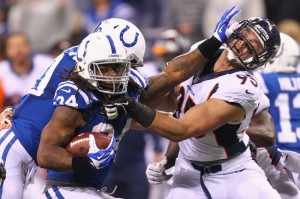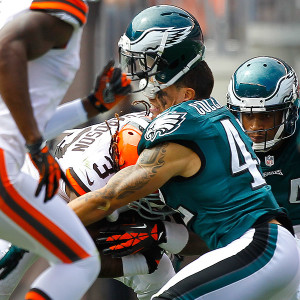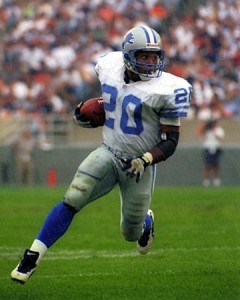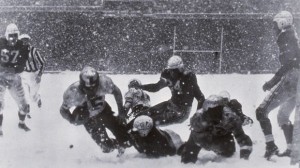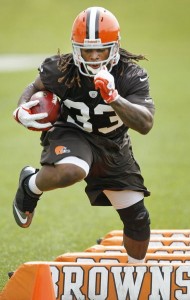- How often does the first running back selected in the draft become the best running back from his class? The field is always a better bet than one player: Only about 40% of the highest-drafted backs led their class in rushing yards as a rookie, with that number dropping to about 33% on a career basis. On the other hand, that’s better than the production of the first-drafted wide receiver.
- In 2012, the field won, as both Doug Martin and Alfred Morris rushed for more yards than Richardson. I then tried to project the number of yards for all three players for 2013 based on their draft status and rookie production; as it turns out, draft status remained extremely important, and Richardson projected to average the most yards per game in year two out of that group (a projection that doesn’t look very good right now).
- In July, I continued to voice my disdain for the use of yards per carry as the main statistic for running backs, when I argued that Richardson’s 3.6 average last year was not important. More specifically, I said if you loved Richardson as a prospect, his 3.6 YPC average in 2012 was not a reason to downgrade him (of course, if you didn’t like Richardson, that’s a different story). Richardson still received a huge percentage of Cleveland carries and had a strong success rate, and I argued that his low YPC was simply a function of a lack of big plays. For a more in-depth breakdown of his rookie season, Brendan Leister compiled a good film-room breakdown of some of Richardson’s mistakes in 2012. Leister noted that Richardson had some mental mistakes, which isn’t atypical of a rookie, and still fawned over the former Alabama star’s physical potential.
- After the trade to Indianapolis, I wrote that Richardson’s ability as a pass blocker was tough to analyze, and advised you to view some of the numbers thrown around in support of Richardson with skepticism. Believe it or not, I still have thoughts on that trade that I just haven’t gotten around to finishing, so look for my hot take on the Richardson deal to be published in say, March.
In 75 carries with the Colts, Richardson is averaging just 3.0 yards per carry. Even though I find yards per carry overrated, there is a certain baseline level of production needed for every running back, and 3.0 falls well short of that number. For his career, Richardson now has 1,283 yards on 373 yards, a 3.44 YPC average. He’ll reach 400 career carries in a couple of weeks, so I thought it might be interesting to look at the YPC averages of all running backs after their first 400 carries.
We can’t measure that exactly through game logs, but what we can do is calculate the career YPC average of each running back after the game in which they hit 400 career carries. The table below shows that number for all running backs who entered the league in 1960 or later and is current through 2012. Let’s start with the top 50 running backs:
[continue reading…]

